Product Updates October 2020
It's been a while since we last posted on our blog, so we thought we would give a quick update about some of the things that we have been up to and some of the things we have planned.
Website Updates
You may have noticed that our docs are looking a little different. We decided to change the structure of them so the articles are broken down into more sections and the sections are in a card view. We have also made them readily available on the main website in the main navigation menu, hopefully this makes them easier for you to find.

You will also notice a search bar within the documentation pages, which will search just the docs so you can locate the articles you need as quickly and easily as possible.
The old help pages have been absorbed into the how to articles or into the user-guide information with updated screen captures and guidance. So those old articles you all found useful do still exist, even though the old links to them will no longer work.
We are always updating the documentation content to make sure it is up to date and any new features are covered, however if there is anything you can't find let us know and we can either point you in the right direction or tell you how to do it.
Data Sync Changes
AD Connector Updates
The Active Directory connector has had an update where it now supports SSL/TLS connections. To connect using SSL change the UseSecureSocketsLayer dropdown to True.
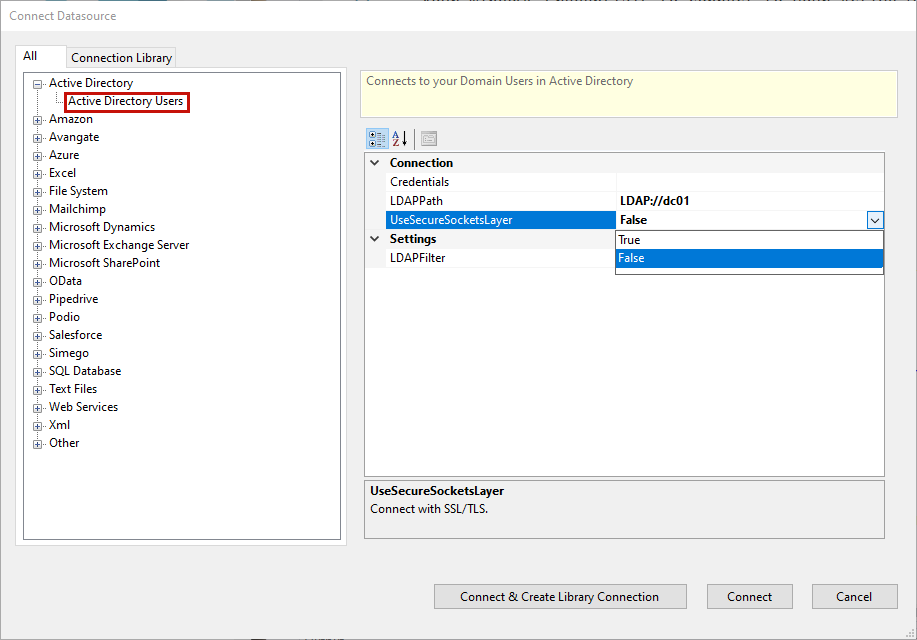
We have big updates planned for the AD connector which you can read about further down this article.
Dynamics Connector
We have been working hard to keep on top of the many changes Microsoft are making, one of these changes being the deprecation of Legacy Authentication (Username and Password) on new and upgraded Dynamics instances. Because of this change applications will need to connect using OAuth, so the Dynamics connector now supports OAuth.
We've created updated guidance on how to connect as you need to create an App within Azure AD to get your ClientID and Client Secret needed to login. Check out the latest Dynamics connection docs here.
It may sound scary, but we promise you it isn't bad at all! The most difficult thing will be getting hold of your Azure AD & Dynamics administrators to configure this for you if you don't have the permissions.
As always, if they have any questions get them to send us an email and we can help guide them on what to do.
SharePoint Connector
As with the Dynamics connector we have also updated the SharePoint connector so it now supports OAuth. The setup for SharePoint requires you to create an App in SharePoint rather than in Azure AD directly, our full documentation details can be found here.
The OAuth connector also supports File Upload and Download, so you can continue to use Data Sync the same as you would have connecting via legacy authentication.
Exchange Connector
It's going to sound like a broken record now... Due to the deprecation of legacy authentication, which was due this year for Exchange but has been postponed till 2021, the Exchange connectors now support OAuth.
As you have come to expect, you can connect to your main mailbox, appointments, contacts and tasks as you need to with your new connection details.
You can find the details on how to connect with OAuth here.
AWS S3 Supports Incremental mode
Another update that I almost forgot to mention is: Our AWS S3 connector now supports Incremental Mode. So for large datasets you can switch to Incremental Mode to incrementally sync your changes, you should find your performance increases when you have a few updates to make (as it won't be trying to load your whole dataset).
Ouvvi Changes
Connector Updates
Like the Data Sync updates, the Ouvvi SharePoint and Dynamics connectors now support OAuth Authentication.
For Dynamics change the Authentication Type dropdown to OAuth and enter in your ClientID into the username field, Client Secret into the Password field, and your domain into the domain field. The documentation for this will be coming soon.
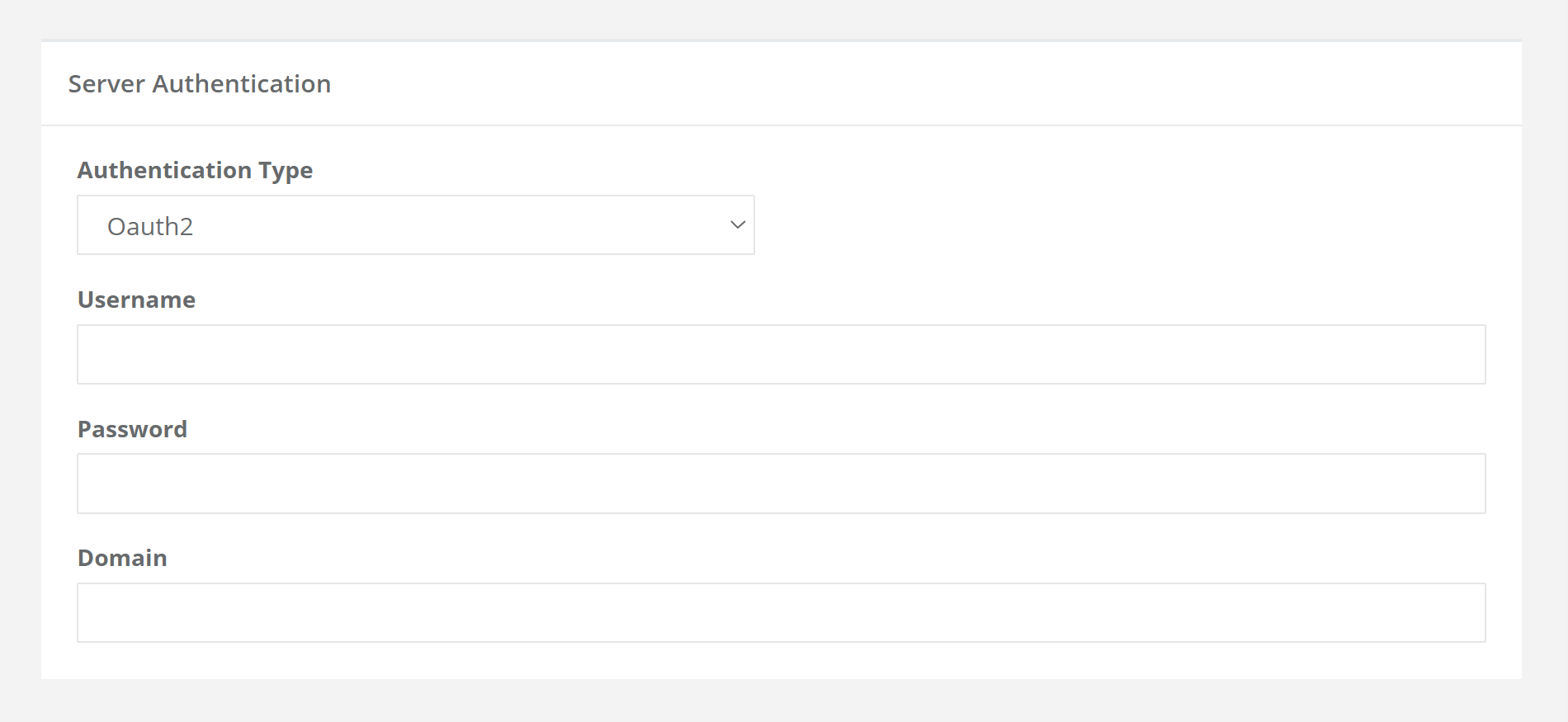
For SharePoint, simply complete the OAuth credentials with your details. The full documentation can be found here.
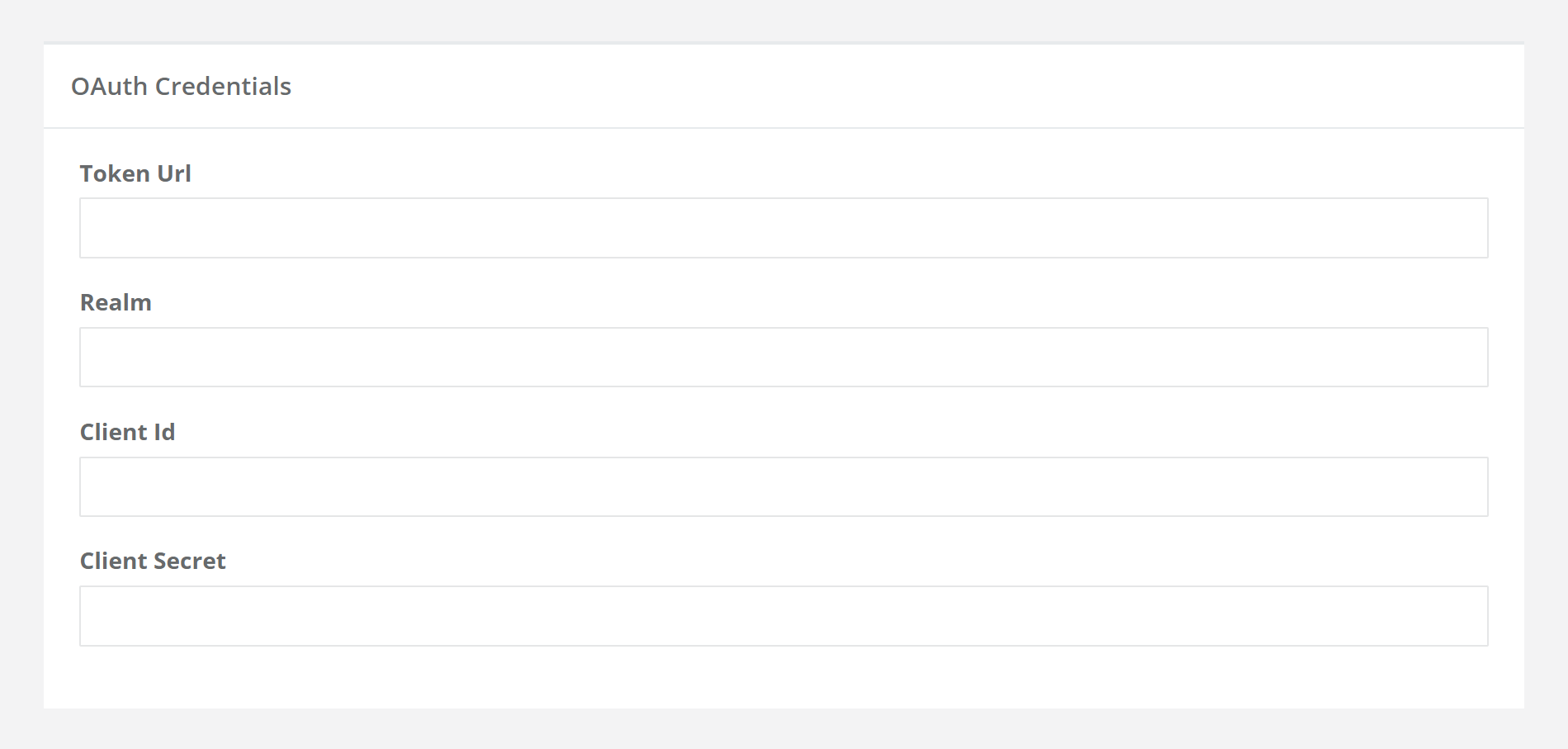
Ouvvi Authentication using Azure AD
You can now configure Ouvvi to use your Azure AD login. If you want to make use of MFA and not have yet another password, you can now configure Ouvvi to use you Microsoft Azure AD login details.
We have our full documentation explaining the process here, but in short you will create an App in Azure AD and then use the details from this app within Ouvvi. The deployment of an agent needs a different process to normal, and this is documented in the documentation, however we are planning on making the agent deployment for this more streamlined in the future.
Import and Export Ouvvi Apps
Ouvvi Apps can now be imported and exported.
If you make use of Ouvvi Apps (we recommend you do as they're incredibly useful) you can now export them to be imported in your other Ouvvi instances. This is also the same for if you move servers and want to create a clean install of Ouvvi on the new server.
Go to the Ouvvi Apps page, click Export and check the checkbox next to each of the Apps you want to include in your export. To import go to the Ouvvi Apps page, click Import and locate the exported files.
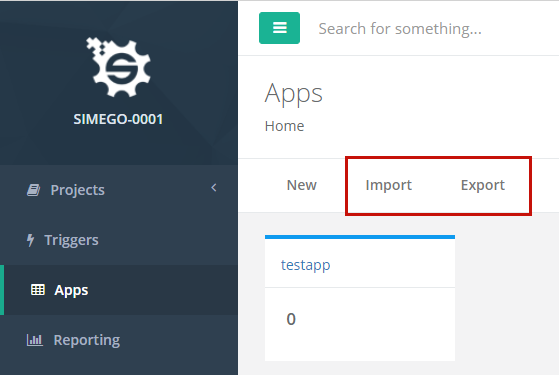
ZipArchive Provider
To make your Ouvvi projects have DevOps solution the import and export can be opened within an IDE so you can make changes and store the updates within your chosen source control system. When you're ready to deploy, simply package the solution and import it back into Ouvvi.
AWS S3 Upload and Download Step Handlers
To keep adding to the value of Ouvvi, we now have built in connectors for S3 Upload and Download. You can include S3 Upload and Download steps within your Ouvvi projects.
We specifically added the S3 steps to help us automate our website deployment.
Ouvvi Online Update
It has been a little while since we first launched Ouvvi Online. We know we didn't go with a big launch party but we did want to see how it would go down with you all first.
So for our progress update: We have a number of customers using Ouvvi Online, some of these are existing customers who have migrated to the online platform (thank you for your support!) and some are brand new customers (welcome to the family!)
We also make use of Ouvvi Online for all our system processes and we have two major instances of Ouvvi to handle these: Systems and Operations.
Systems handles the rolling deployment of Ouvvi Online updates, the website deployment and the building of Data Sync and Ouvvi releases.
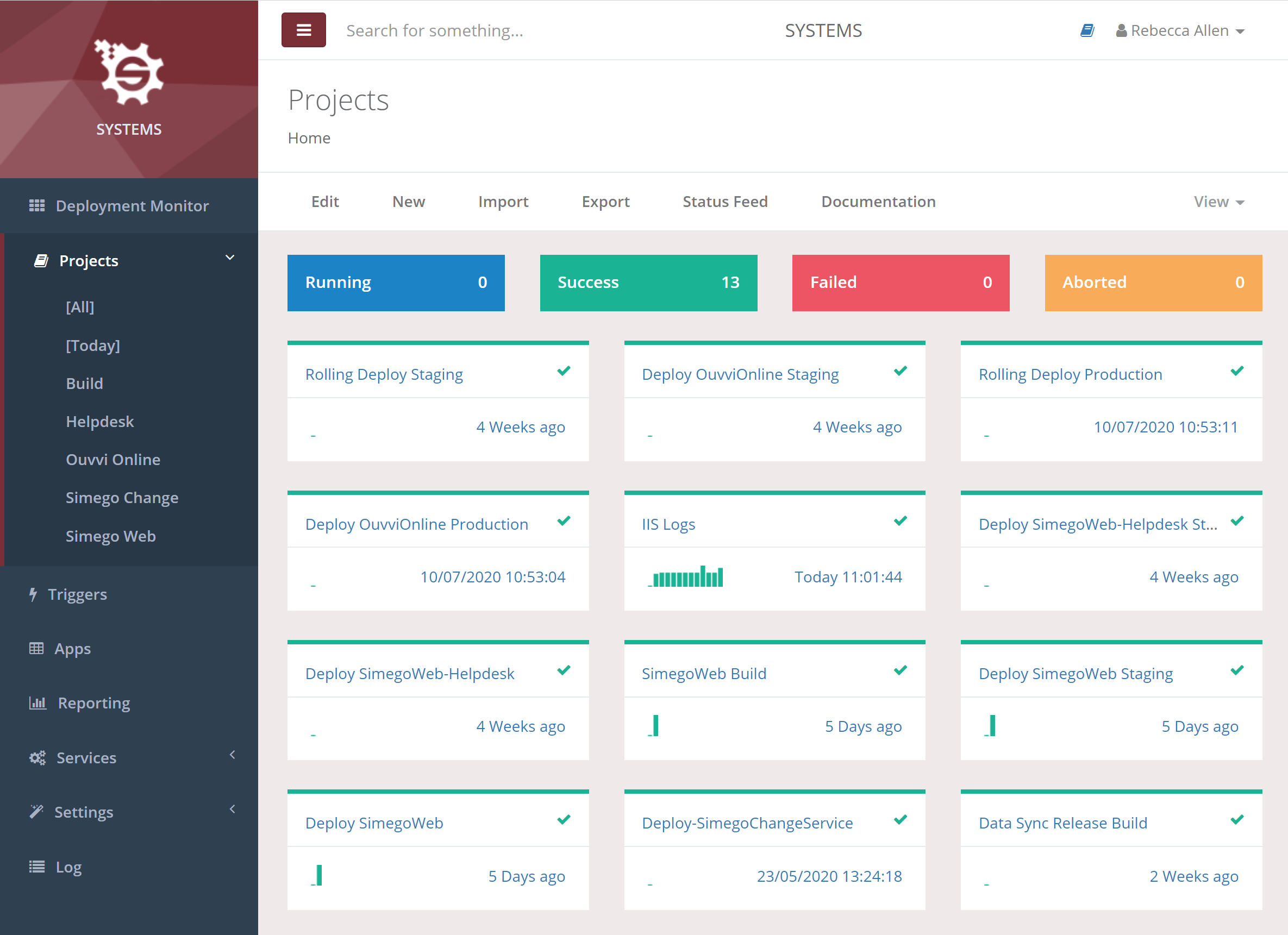
Operations handles the working parts such as the Helpdesk, order notifications, trial notifications and the GDPR data control.
We have been using Ouvvi Online since February/March 2020 and haven't had any issues (touch wood!) We get reports from Pingdom to let us know if there are any issues/downtime, and when you look at our report you can see 100% uptime!
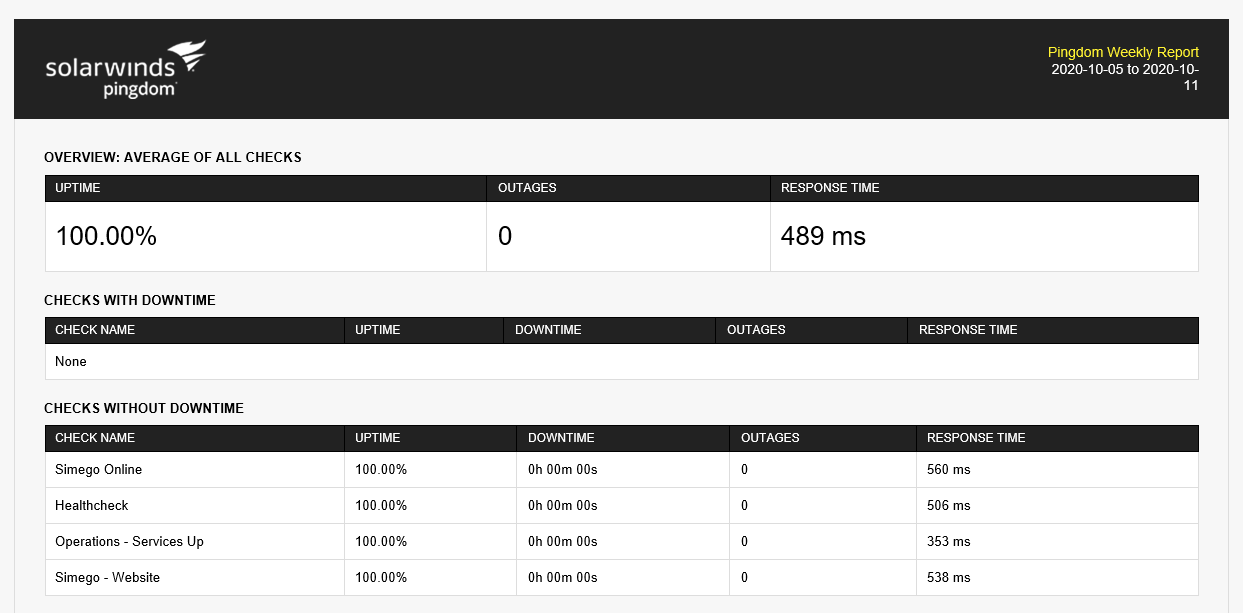
To handle updates to the platform we use a rolling deployment and this has been working brilliantly. One of the many benefits of Ouvvi Online is that we handle the updates to the system so you don't have to. You also get access to the latest features before they become available in the on-premise version of Ouvvi, and some features will only be available in Ouvvi Online.
UPDATE: Ouvvi Online has been re-named to Simego-Online. It has also been re-worked so that it works better with the Run Tool and Data Sync. Out of the box Simego Online will run Data Sync and Run Tool projects, if you want to have access to the other step types available in Ouvvi in your Simego Online instance contact us and we can discuss what you need.
Automated Build System
Using Ouvvi Online we have now automated our Build process of Data Sync and Ouvvi. So in a slightly strange but still ever so cool way we use Ouvvi to deploy Ouvvi, chicken or egg situation anyone? So now when we make an update to Data Sync and/or Ouvvi and we want to deploy this to the beta site we simply log in to our Systems Ouvvi and start the project. Yes we could take this further to be fully automated so then when a file is changed in a folder it automatically kicks off the project, but we like having this bit of control.
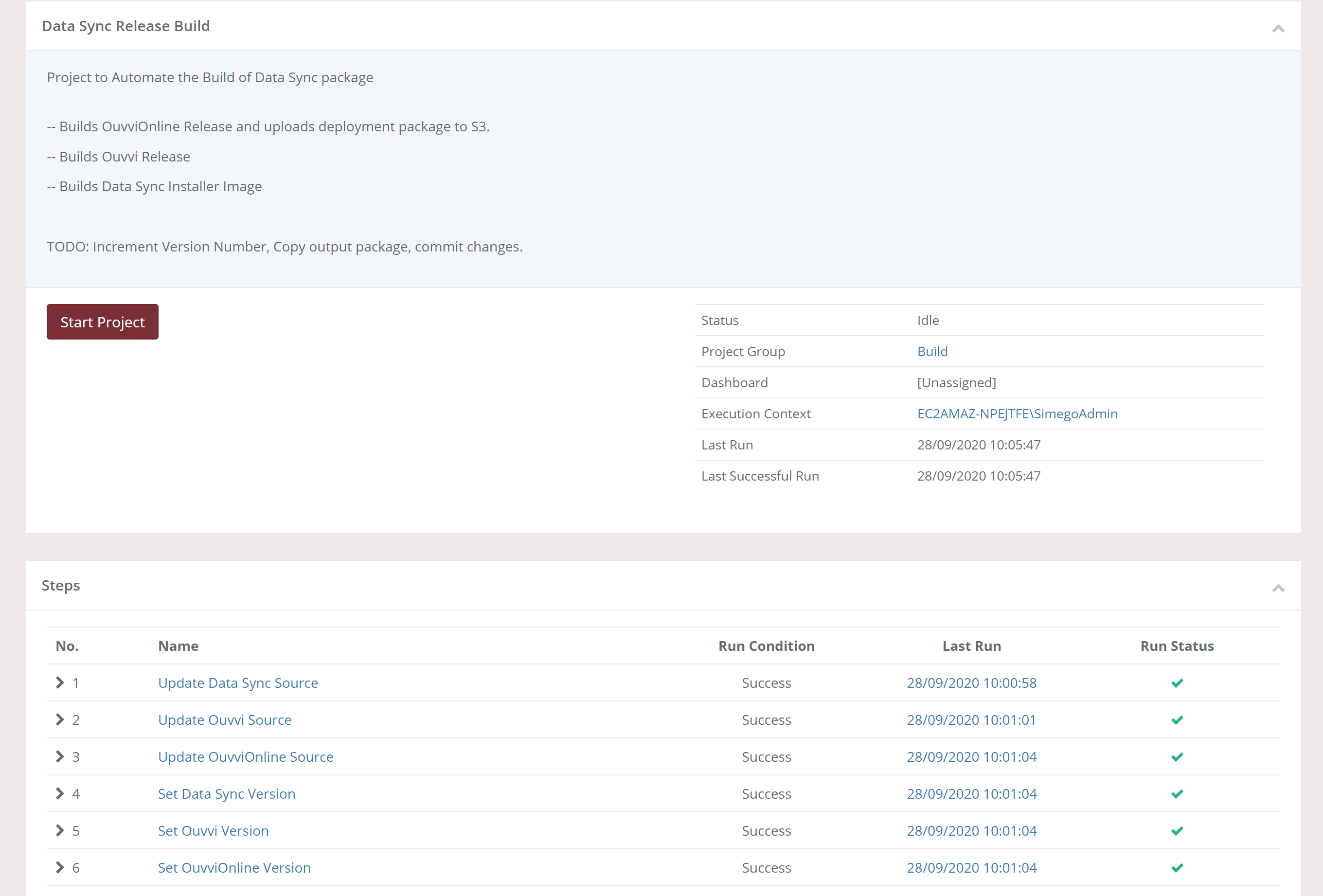
Previously we found our website deployment build was incredibly manual, but why couldn't we automate it? So in our process clean up we thought "Couldn't we use Ouvvi to do this?"
So we now have three projects that manage the deployment. One to upload to S3, one to deploy to the staging site for our testing, and another to deploy to the live site.
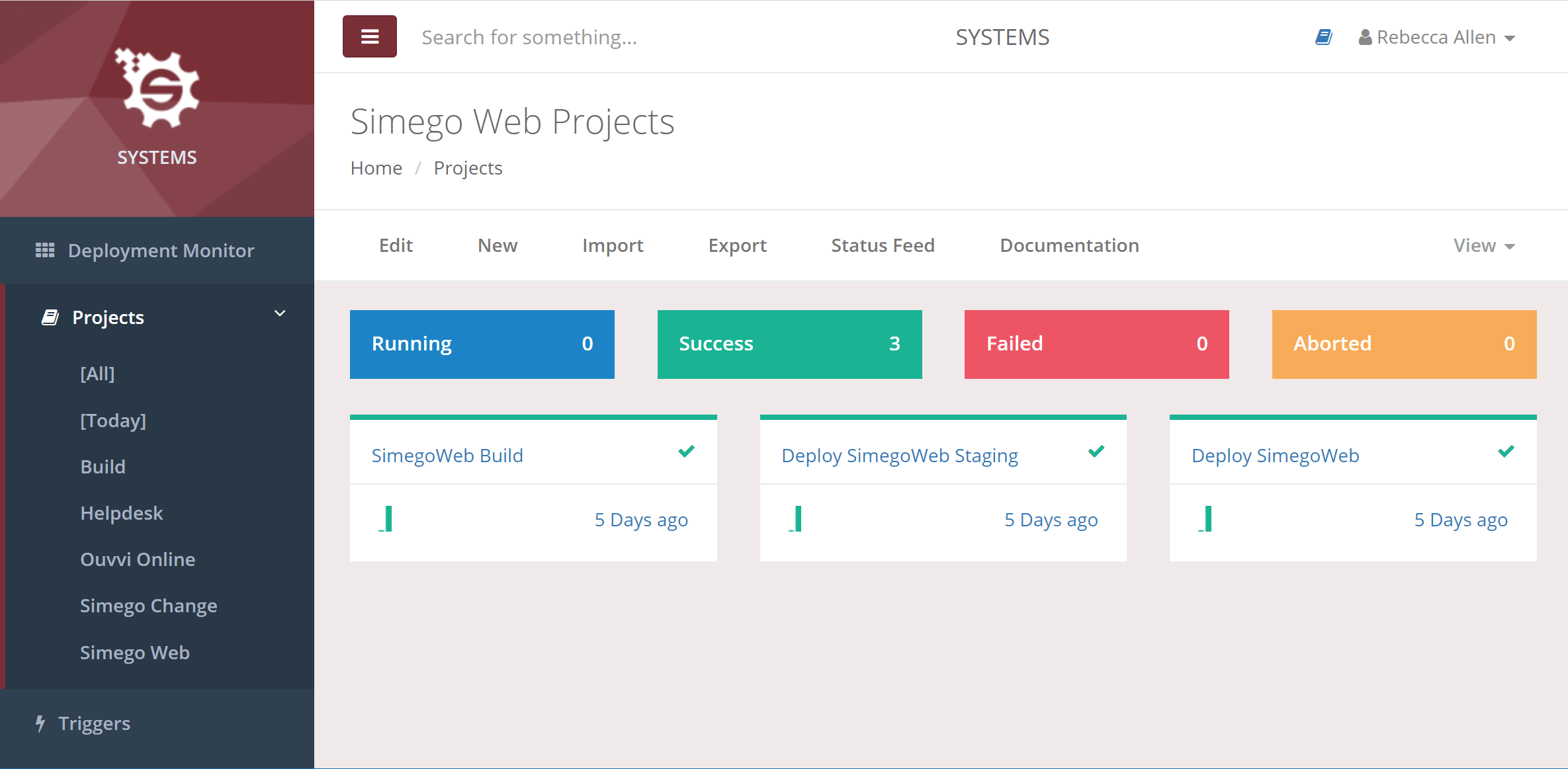
Going Forward
To wrap it all up lets have a quick look at what you can expect from us in the near future.
Active Directory Connector Updates
We want to do extend the Active Directory connector so that it can do more, however it is most likely going to be a brand new connector so that we can do things behind the scenes a little differently to make the changes possible. Some of the features we want to add are: Automatically map the Manager column without having to define the column, support connecting to multiple OUs and support lookups into other OU's and groups.
Are there any other features you think would be useful to have added?
Now is your chance to shape the AD connector to potentially work how you want it to, let us know any thoughts you have and we can look at adding them in.
Adding SQL Lite to Ouvvi
We are looking to add a self contained database option for Ouvvi such as SQL Lite. The thought process behind it is that it will simplify the installation and you will not need to install SQL Express or have your own SQL Server to make use of Ouvvi.
What are your thoughts, do you think this could be a good option and would you be interested?
Dynamic UI for Step Handlers
We are currently working on a Dynamic UI for the Ouvvi step handlers. This means that you can build a custom user interface from the code without having to define it elsewhere.
You'll be able to create custom step handlers to upload into Ouvvi and use and the UI will automatically return with the default view unless you decide to define it exactly. You can group the various properties to return in separate cards. By default it will return each as a column that spans the space, but you can then further define this so that properties are returned side by side spanning half or a third of the row etc.
We've done this to clean up our code base and make our lives easier when writing new step handlers, triggers and connectors for Ouvvi, and if you want to write your own it should help you too!
It will also make it possible to dynamically hide options that aren't relevant for the configuration option you chose.
Got any questions about writing your own Handler? Send us an email and we can help you out.
Continuing through Covid
We've been lucky enough that throughout this pandemic you, our customers, have continued to find ways to use Data Sync and Ouvvi to help automate your processes. Over this time we have taken on 30 new customers, who are either completely new to our Products or have been recommended to use them by someone else.
So this has kept us busy, making sure that everyone can continue to connect to all their applications and trying to plan ahead for the future. If everyone is going to be working remotely more often then is a shift towards being a SaaS product where we need to be? Let us know your thoughts, would being able to access Ouvvi and edit your projects from anywhere either on your laptop or your mobile or tablet be useful for you?
If it is, maybe you want to try Ouvvi Online out.
Final Note
On another more personal note, we got to have a bit of a celebration in September as Rebecca got married! Due to restrictions they have had multiple small wedding days and so far all of them have had glorious sunshine. Let's hope the rest are as sunny when they get back to celebrating again in spring.
So as our final note of the post here is a picture of the happy couple on the day.

